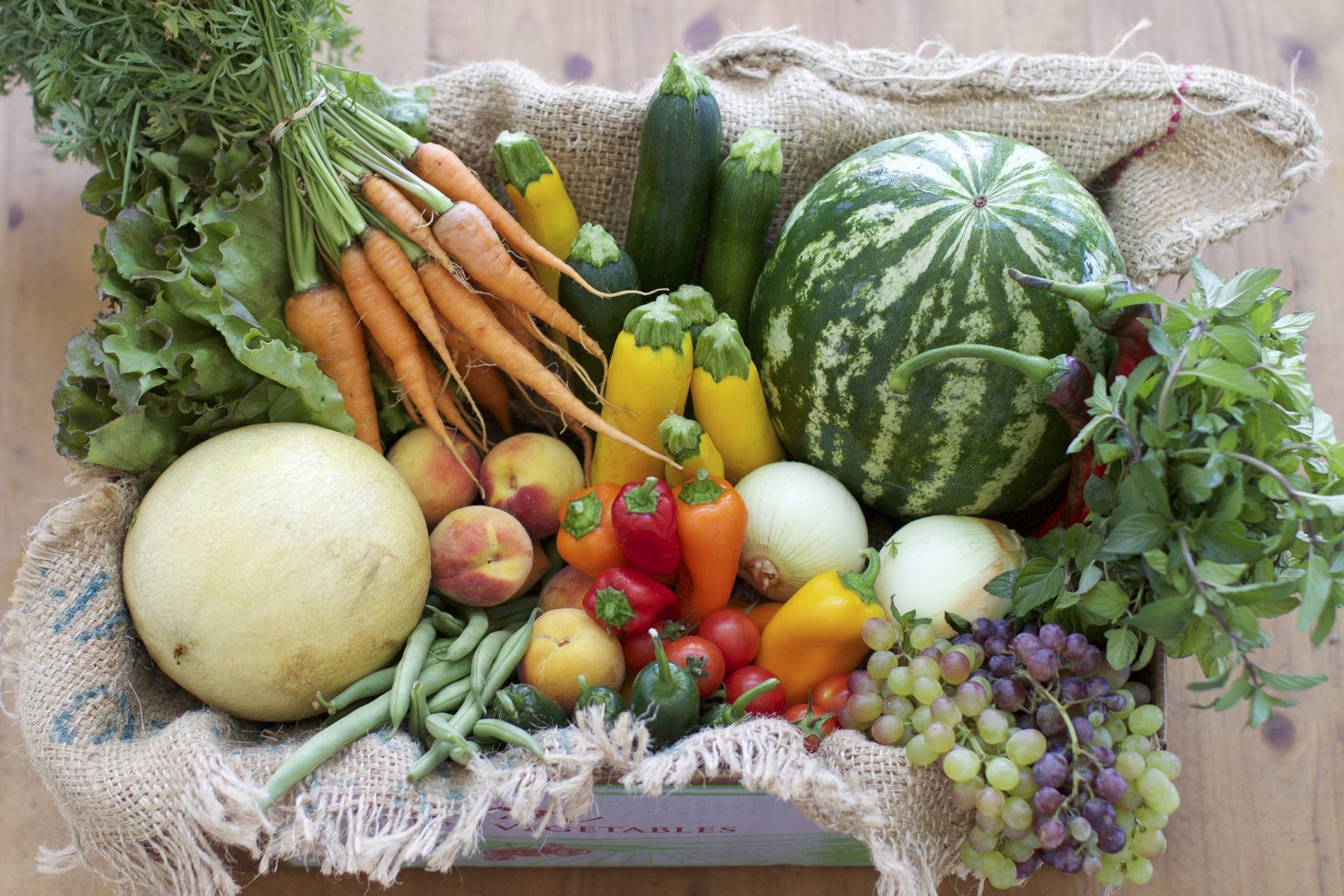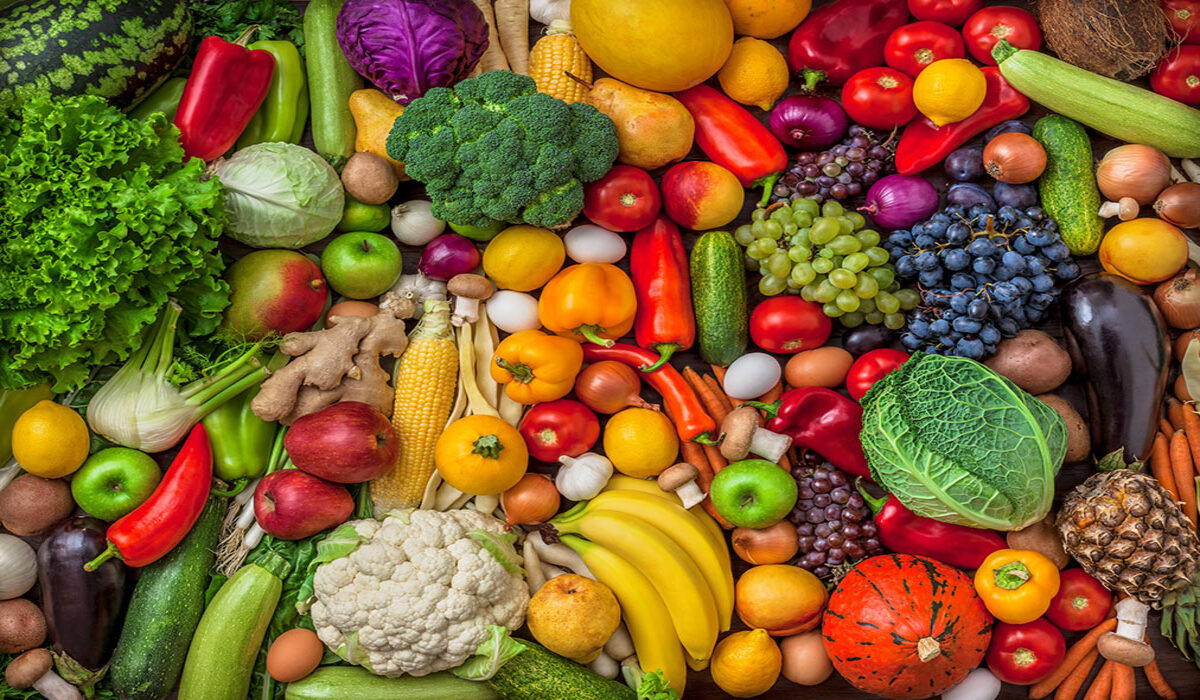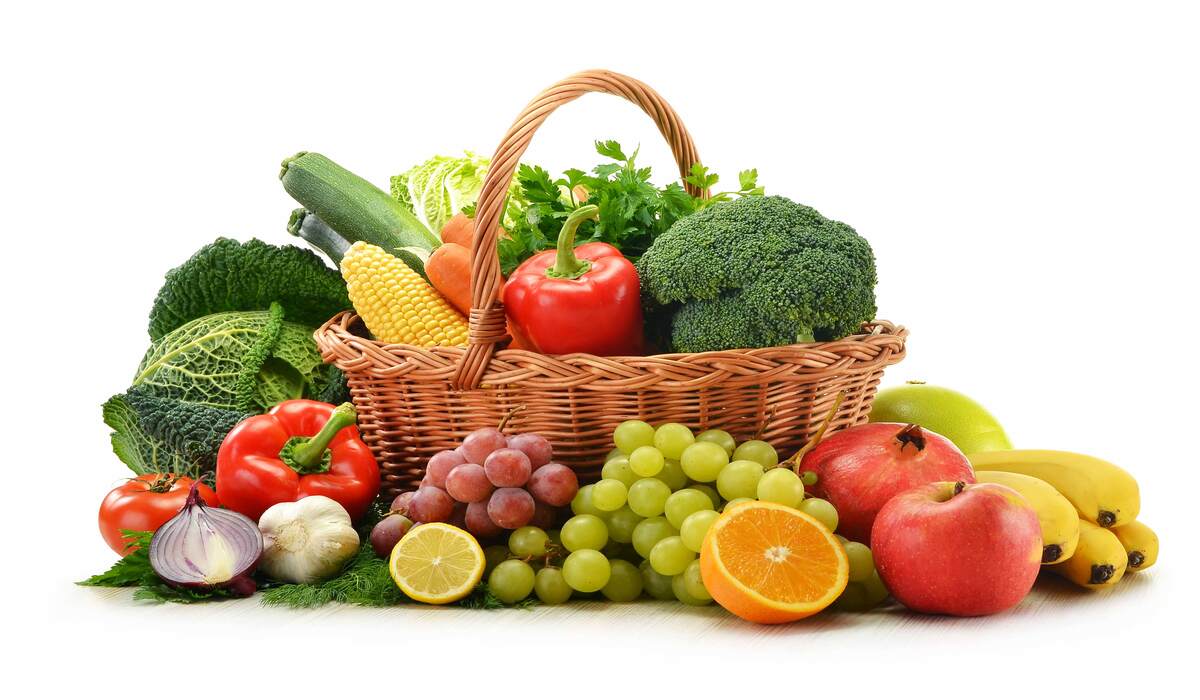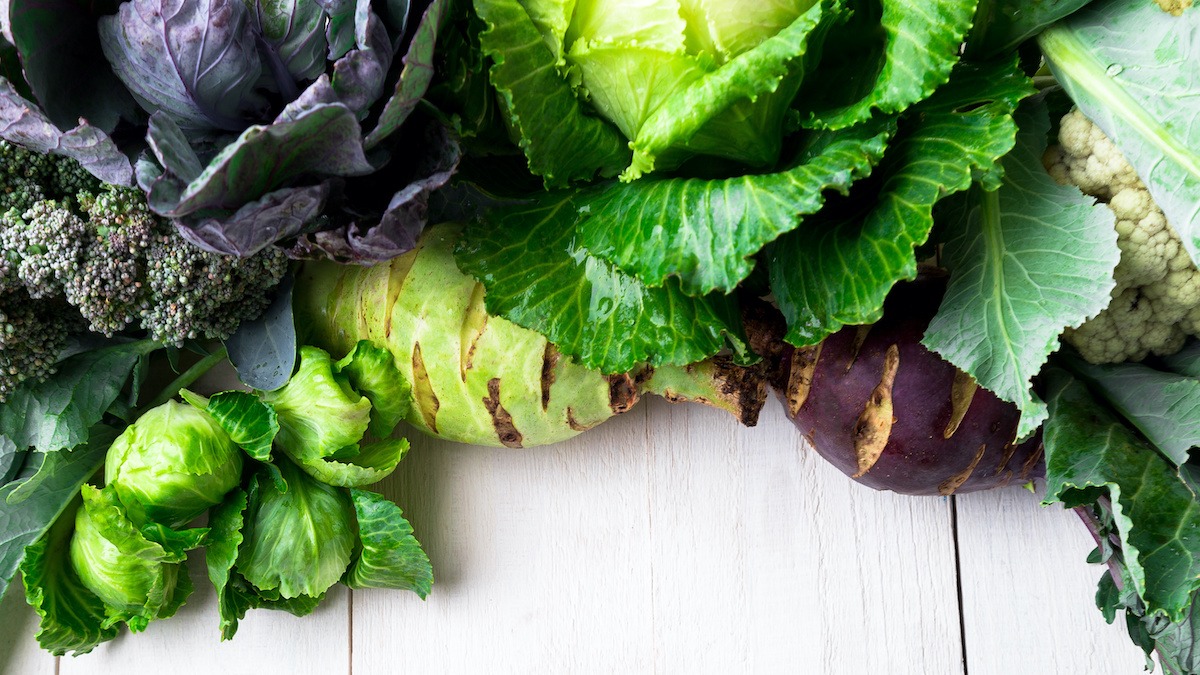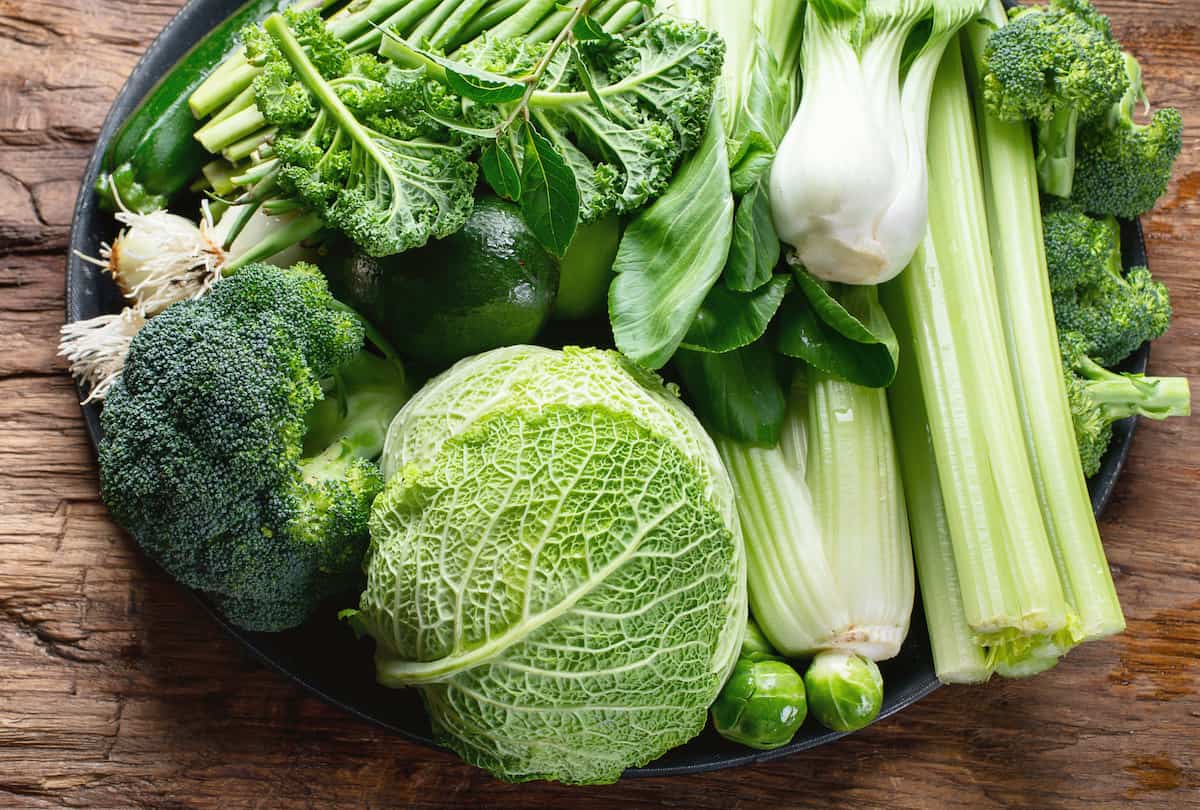Home>Gardening News and Trends>Latest News>What Vegetables Are Bad For Gout
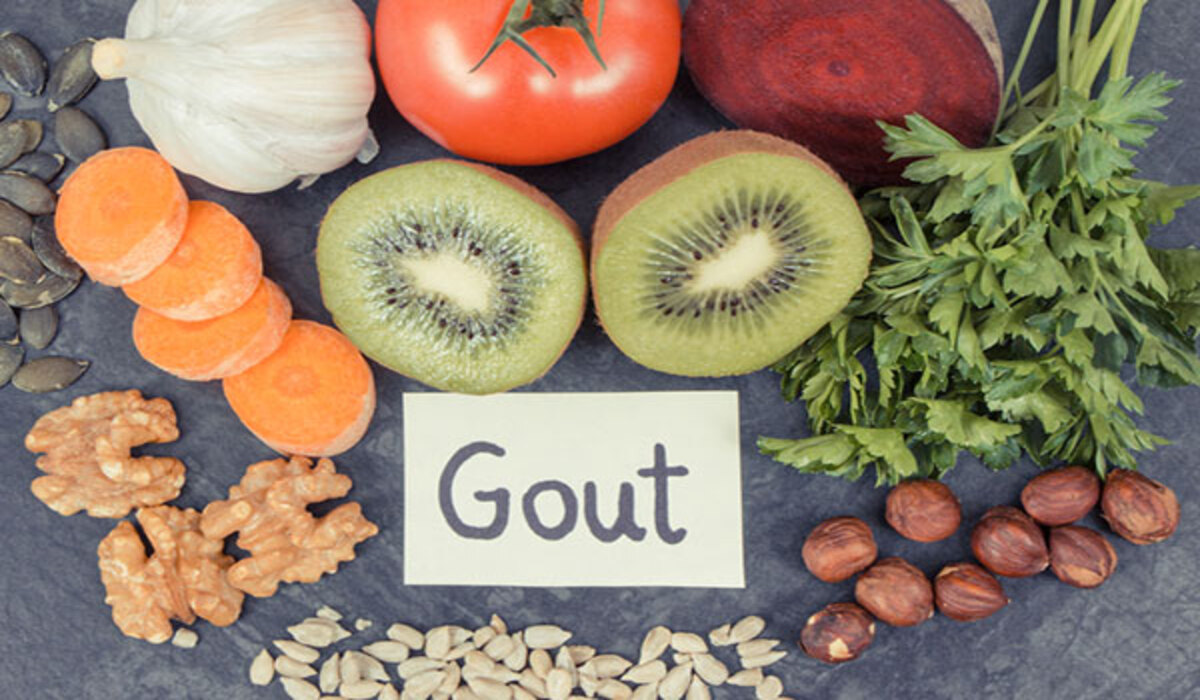

Latest News
What Vegetables Are Bad For Gout
Published: October 14, 2023
Discover the latest news on what vegetables are bad for gout. Learn which veggies to avoid to manage your gout symptoms and improve your overall health.
(Many of the links in this article redirect to a specific reviewed product. Your purchase of these products through affiliate links helps to generate commission for Chicagolandgardening.com, at no extra cost. Learn more)
Table of Contents
- Introduction
- Understanding Gout and its Dietary Implications
- Role of Diet in Managing Gout
- Vegetables and Gout: An Overview
- Vegetables to Avoid for Gout
- Asparagus
- Spinach
- Cauliflower
- Mushrooms
- Peas
- Lentils
- Beans
- Brussels Sprouts
- Kale
- Broccoli
- Conclusion
- Summary of Vegetables to Avoid for Gout
- Additional Dietary Considerations for Gout Management
- References
Introduction
Gout is a type of arthritis that affects millions of people worldwide. It is characterized by sudden and severe attacks of pain, swelling, and inflammation in the joints, most commonly occurring in the big toe. While medications can help manage gout symptoms, adopting a healthy lifestyle and making dietary changes are essential for long-term management and prevention.
Diet plays a crucial role in managing gout as certain foods can either trigger or alleviate symptoms. One major focus of dietary modifications for gout is the consumption of vegetables. However, not all vegetables are created equal. Some vegetables contain high levels of purines, a compound that can increase uric acid levels in the body, triggering gout attacks. Therefore, knowing which vegetables to avoid can be crucial for individuals looking to manage their gout effectively.
In this article, we will explore the relationship between vegetables and gout and specifically highlight vegetables that are best to avoid. Please note that while these vegetables may not be suitable for individuals with gout, they can still be part of a healthy diet for individuals without gout.
It is important to note that every person’s body reacts differently to certain foods, and what works for one person may not work for another. Therefore, it is always advised to consult with a healthcare professional or a registered dietitian before making any significant dietary changes.
Understanding Gout and its Dietary Implications
Gout is a form of arthritis caused by the accumulation of uric acid crystals in the joints. Uric acid is a byproduct of the breakdown of purines, substances naturally found in the body and certain foods. When there is an excess of uric acid in the bloodstream, crystals can form, leading to inflammation and severe pain in the joints.
Dietary choices can have a significant impact on gout as certain foods are high in purines, increasing the production of uric acid in the body. By making conscious decisions about what we consume, we can effectively manage gout symptoms and reduce the frequency and intensity of gout attacks.
The primary dietary goals for individuals with gout are to reduce the intake of purines and maintain a healthy body weight. Purine-rich foods, including some types of meat, seafood, and alcohol, should be avoided or limited. At the same time, incorporating certain vegetables into the diet can provide necessary nutrients and antioxidants, while also helping to lower uric acid levels.
It is important to note that vegetables, in general, are considered healthy and beneficial for overall health. However, some vegetables have higher purine content compared to others, making them less suitable for individuals with gout. By being aware of these vegetables and their impact, individuals can make informed choices to support their gout management efforts.
Additionally, maintaining a healthy weight is crucial for gout management. Obesity is associated with higher uric acid levels in the body, leading to an increased risk of developing gout and more frequent gout attacks. Incorporating a diet rich in vegetables, along with regular physical activity, can contribute to weight loss and overall improvement in gout symptoms.
While diet plays a key role in gout management, it is essential to note that it is not the sole factor. Other lifestyle modifications, such as staying well-hydrated, avoiding excessive alcohol consumption, and managing stress levels, are also important in preventing gout attacks.
Role of Diet in Managing Gout
Diet plays a crucial role in the management and prevention of gout. By making thoughtful choices about the foods we consume, we can control the production of uric acid and reduce the risk of gout attacks. The right diet can help lower uric acid levels in the body, alleviate symptoms, and improve overall well-being.
One key dietary consideration for individuals with gout is the restriction of foods high in purines. Purines are naturally occurring compounds found in certain foods and are broken down into uric acid in the body. By limiting the intake of high-purine foods, we can reduce the production of excessive uric acid and minimize the risk of gout attacks.
Avoiding or minimizing the consumption of red meat, organ meats (such as liver and kidney), seafood (such as shellfish and anchovies), and certain types of alcohol (such as beer and spirits) is crucial for managing gout through diet. These foods are known to be purine-rich and can lead to heightened uric acid levels in the body.
Incorporating vegetables into the diet is essential for managing gout. Vegetables are low in purines and provide essential vitamins, minerals, and antioxidants that support overall health. They are also often rich in fiber, which aids in maintaining a healthy body weight. By including a variety of vegetables in our meals, we can enjoy flavorful and nutritious options while minimizing the risk of gout attacks.
Furthermore, maintaining adequate hydration is important for individuals with gout. Drinking plenty of fluids, especially water, helps flush out excess uric acid from the body and promotes proper kidney function. It is recommended to consume at least eight glasses of water per day to stay well-hydrated.
It is worth noting that while specific dietary changes can be effective in managing gout, they should be implemented as part of an overall healthy and balanced diet. This includes consuming a variety of nutrient-rich foods, incorporating whole grains, lean proteins, and healthy fats, and limiting processed and sugary foods.
By adopting a thoughtful and intentional approach to our diet, we can effectively manage our gout symptoms, reduce the frequency of gout attacks, and improve our overall quality of life.
Vegetables and Gout: An Overview
When it comes to managing gout through diet, vegetables are an important component to consider. While vegetables are generally considered healthy and beneficial, not all vegetables are created equal in terms of their impact on gout. Some vegetables contain higher levels of purines, which can increase uric acid levels in the body and potentially trigger gout attacks.
However, it is important to note that vegetables as a whole are still an essential part of a balanced diet for individuals with gout. They provide valuable nutrients, antioxidants, and fiber, and can contribute to overall health and well-being.
When choosing vegetables for a gout-friendly diet, it is important to focus on low-purine options. These vegetables have lower levels of purines compared to other varieties and can be enjoyed in moderation without significantly increasing the risk of gout attacks.
In addition to considering the purine content, it is also important to pay attention to other factors that may affect gout. Some vegetables may have high levels of oxalates, which can contribute to the formation of kidney stones, a condition commonly associated with gout. Therefore, individuals with gout who have a history of kidney stones may need to moderate their intake of certain vegetables rich in oxalates.
By understanding the impact of different vegetables on gout, individuals can make informed choices and tailor their diet to minimize the risk of gout attacks while still enjoying a wide variety of nutritious vegetables.
It is important to reiterate that every person’s body reacts differently to certain foods, and what works for one individual may not work for another. Consulting with a healthcare professional or a registered dietitian is always advisable to personalize dietary recommendations and ensure the best management of gout symptoms.
Vegetables to Avoid for Gout
While vegetables are generally considered healthy and beneficial, individuals with gout need to be cautious about certain vegetables that may contain higher levels of purines. These vegetables have the potential to raise uric acid levels in the body and potentially trigger gout attacks. Here are some vegetables that are best to avoid or consume in moderation:
- Asparagus: Asparagus is known to have moderately high purine content, making it a vegetable to avoid or consume sparingly for individuals with gout.
- Spinach: Spinach is another vegetable that contains moderate levels of purines. While it offers various health benefits, individuals with gout may want to limit their intake.
- Cauliflower: Cauliflower is a cruciferous vegetable that can be enjoyed in a gout-friendly diet. However, it is important to consume it in moderation due to its moderate purine content.
- Mushrooms: Mushrooms, particularly certain varieties like portobello and shiitake, contain higher purine levels. Therefore, individuals with gout should limit their consumption of mushrooms.
- Peas: Peas, including green peas and split peas, have moderate to high purine content. It is advisable for individuals with gout to consume them sparingly.
- Lentils: Lentils are legumes that offer numerous health benefits. However, they also contain moderate levels of purines. Individuals with gout should consume lentils in moderation.
- Beans: Certain types of beans, such as kidney beans and navy beans, have higher purine content. Individuals with gout are advised to limit their consumption of these beans.
- Brussels Sprouts: Brussels sprouts, although nutritious, contain moderate levels of purines. It is recommended to enjoy them in moderation to manage gout effectively.
- Kale: Kale, a popular leafy green vegetable, contains moderate levels of purines. Individuals with gout should be mindful of their kale intake and enjoy it in moderation.
- Broccoli: Broccoli is a healthy vegetable packed with nutrients. However, it also contains moderate levels of purines, so it should be consumed in moderation by individuals with gout.
It is important to remember that the key is moderation when it comes to these vegetables. While they may be best to avoid or limit for individuals with gout, they still offer nutritional value and can be enjoyed occasionally in smaller portions. As always, consulting with a healthcare professional or registered dietitian is recommended to personalize dietary recommendations and ensure the most effective management of gout symptoms.
Asparagus
Asparagus is a popular vegetable known for its delicate flavor and nutritional benefits. However, when it comes to gout management, individuals with gout may need to be cautious with their asparagus intake due to its moderate purine content.
Asparagus contains a moderate level of purines, which are naturally occurring compounds that can increase uric acid levels in the body. Elevated uric acid levels can contribute to the formation of uric acid crystals, triggering gout attacks in susceptible individuals.
While asparagus can still be enjoyed in moderation as part of a gout-friendly diet, it is important to limit the portion size and frequency of consumption. By reducing the intake of asparagus, individuals can help minimize the risk of gout attacks.
It is worth noting that cooking methods can also influence the purine content of asparagus. Boiling asparagus may leach out some of the purines into the cooking liquid, reducing the overall purine content. Therefore, cooking techniques like boiling can be considered to help decrease the potential impact of asparagus on uric acid levels.
Despite its purine content, asparagus offers several health benefits. It is a great source of dietary fiber, vitamins A, C, and E, as well as folate. It also contains antioxidants that help reduce inflammation and support overall health.
Individuals with gout who enjoy the taste and nutritional benefits of asparagus can still include it in their gout-friendly diet by practicing moderation. Balancing the intake of asparagus with other low-purine vegetables and incorporating other lifestyle modifications, such as staying hydrated and maintaining a healthy weight, can contribute to the overall management of gout.
It is important to remember that every individual’s tolerance to purine-rich foods varies, and what may trigger gout attacks in some individuals may not have the same effect on others. Consulting with a healthcare professional or registered dietitian is advisable to personalize dietary recommendations and ensure the most effective management of gout symptoms.
Spinach
Spinach, a nutrient-dense leafy green vegetable, is widely recognized for its health benefits. However, it is important for individuals with gout to be mindful of their spinach consumption due to its moderate purine content.
Spinach contains purines, which are naturally occurring compounds that can be broken down into uric acid in the body. Consuming foods high in purines can elevate uric acid levels, increasing the risk of gout attacks.
While spinach is not the highest purine-containing vegetable, individuals with gout should still be cautious and moderate their intake. Incorporating small portions of spinach into meals can provide valuable nutrients without significantly increasing the risk of gout attacks.
Fortunately, there are various cooking techniques that can help reduce the purine content of spinach. Blanching or steaming spinach can help leach out some of the purines, lowering their concentration in the vegetable. Additionally, incorporating spinach with other low-purine vegetables can dilute its overall purine content.
Despite its moderate purine content, spinach offers numerous health benefits. It is rich in vitamins, minerals, and antioxidants, including vitamin A, vitamin C, vitamin K, iron, and calcium. Spinach also contains phytochemicals that have anti-inflammatory properties, which can be particularly beneficial for individuals with gout.
Individuals with gout can enjoy the nutritional benefits of spinach while managing their condition by practicing moderation. Including spinach as part of a diverse and balanced diet, along with other low-purine vegetables and gout-friendly foods, can contribute to the overall management of gout.
It is important to note that dietary recommendations for gout management may vary depending on the individual’s specific needs and overall health. Consulting with a healthcare professional or registered dietitian is recommended to receive personalized dietary guidance and ensure the most effective management of gout symptoms.
Cauliflower
Cauliflower, a versatile and nutritious vegetable, is often enjoyed as a low-carb alternative to rice or potatoes. When it comes to managing gout, individuals with the condition can still include cauliflower in their diet, but it is important to consume it in moderation due to its moderate purine content.
While cauliflower does contain purines, which are naturally occurring compounds that can increase uric acid levels in the body, it is not as high in purines as some other vegetables. This makes it a suitable choice for individuals with gout who want to incorporate a variety of vegetables into their diet.
When consuming cauliflower, individuals with gout should be mindful of their portion sizes and frequency of consumption. Moderation is key to minimizing the risk of purine buildup and potential gout attacks.
It is worth noting that cooking methods can also affect the purine content of cauliflower. Boiling cauliflower may cause some purines to leach out into the cooking water, reducing the overall purine content. Therefore, individuals with gout may consider boiling cauliflower or using other cooking techniques that can help lower the purine concentration.
Despite its moderate purine content, cauliflower offers various health benefits. It is a rich source of vitamins, including vitamin C, vitamin K, and several B vitamins. Cauliflower is also packed with fiber, which aids in digestion and helps maintain healthy cholesterol levels.
Moreover, cauliflower is a low-calorie vegetable, making it a suitable choice for those aiming to manage their weight. Maintaining a healthy body weight is important for individuals with gout, as obesity is associated with higher uric acid levels and an increased risk of gout attacks.
Individuals with gout can incorporate cauliflower into their diet as part of a balanced and diverse meal plan. By combining cauliflower with other low-purine vegetables and following other dietary recommendations for gout management, individuals can enjoy the nutritional benefits of cauliflower without compromising their gout management goals.
It is important to remember that individual tolerances to purine-rich foods may vary. If concerned, individuals should consult with a healthcare professional or registered dietitian to receive personalized dietary advice and ensure the most effective management of gout symptoms.
Mushrooms
Mushrooms, with their unique flavors and textures, are a popular ingredient in many dishes. However, individuals with gout should exercise caution when consuming mushrooms due to their higher purine content.
Certain varieties of mushrooms, such as portobello and shiitake, contain more purines compared to other vegetables. Purines are compounds that can increase uric acid levels in the body, which can contribute to gout attacks in susceptible individuals.
While mushrooms may need to be limited or avoided by individuals with gout, it is important to note that cooking methods can influence their purine content. For example, grilling mushrooms can help reduce their overall purine levels compared to eating them raw or sautéed.
If you have gout, it is recommended to consult with a healthcare professional or registered dietitian to determine the appropriate intake of mushrooms in your diet. They can provide personalized recommendations based on your specific needs and medical history.
Despite their purine content, mushrooms offer several nutritional benefits. They are a good source of B vitamins, such as riboflavin and niacin, as well as minerals like potassium and selenium.
Moreover, mushrooms are low in calories and fat, making them a good option for individuals looking to manage their weight. Maintaining a healthy weight is important for gout management, as excess weight can contribute to higher uric acid levels and an increased risk of gout attacks.
For individuals with gout who enjoy the flavor and versatility of mushrooms, moderation is key. It may be beneficial to include other low-purine vegetables in your meals to balance your purine intake and minimize the risk of gout attacks.
As with any dietary consideration for gout management, individual tolerances and needs may vary. Seeking professional guidance ensures that you make the most appropriate choices for your condition.
By consulting with a healthcare professional or registered dietitian and incorporating mushrooms mindfully into a balanced and gout-friendly diet, individuals can continue to enjoy their culinary benefits while effectively managing their gout symptoms.
Peas
Peas, with their sweet and vibrant taste, are commonly enjoyed as a side dish or added to various recipes. However, individuals with gout should be mindful of their intake as peas contain moderate to high levels of purines.
Purines are natural compounds that can elevate uric acid levels in the body, leading to an increased risk of gout attacks. While peas provide important nutrients and fiber, their purine content makes them a vegetable that individuals with gout should consume in moderation.
When incorporating peas into a gout-friendly diet, it is crucial to pay attention to portion sizes and frequency of consumption. Limiting the intake of peas can help individuals with gout manage their uric acid levels and reduce the likelihood of gout attacks.
It is worth noting that different varieties of peas may have varying levels of purines. For instance, green peas and split peas contain moderate to high levels, while snow peas and snap peas typically have lower purine content. Individuals with gout may consider opting for lower purine varieties when including peas in their meals.
Cooking methods can also influence the purine content of peas. Boiling peas, similar to other vegetables, can help reduce the overall purine levels compared to consuming them raw or using other cooking techniques.
While peas may need to be consumed in moderation by individuals with gout, they offer valuable nutritional benefits. They are a good source of vitamins, including vitamin A, vitamin K, and several B vitamins. Peas are also rich in dietary fiber, which can aid in digestion and contribute to overall heart health.
For individuals with gout who enjoy the taste and texture of peas, striking a balance is key. By incorporating small portions of peas alongside other low-purine vegetables and following a gout-friendly diet, individuals can still benefit from the nutritional value of peas while managing their gout effectively.
It is important to consult with a healthcare professional or registered dietitian to receive personalized dietary guidance that suits your specific needs and medical history. They can provide recommendations on the appropriate portion sizes and frequency of consumption for peas and other vegetables in your gout management plan.
Lentils
Lentils, a type of legume, are a popular staple in many cuisines due to their versatility and nutritional value. However, individuals with gout should consume lentils in moderation as they contain moderate levels of purines.
Purines are naturally occurring compounds that can be broken down into uric acid in the body. Consuming foods high in purines can increase uric acid levels and potentially trigger gout attacks in susceptible individuals.
While lentils do contain purines, they also offer valuable health benefits. They are an excellent source of plant-based protein, fiber, and complex carbohydrates. Lentils are also rich in essential minerals, including iron, potassium, and folate.
When incorporating lentils into a gout-friendly diet, portion control is important. Consuming smaller portions of lentils infrequently can help minimize the risk of uric acid buildup and gout attacks.
It is worth noting that cooking methods can influence the purine content of lentils. Soaking and rinsing lentils thoroughly before cooking them may help reduce their purine levels. Additionally, cooking lentils with other low-purine ingredients, such as vegetables and herbs, can help balance out their overall purine content.
Furthermore, the high fiber content in lentils provides various health benefits. Fiber aids in digestion, helps regulate blood sugar levels, and promotes heart health. These benefits make lentils a worthy addition to a gout-friendly diet.
Despite their moderate purine content, individuals with gout can still enjoy lentils in moderation. Including them in meals alongside other low-purine vegetables and gout-friendly foods can provide a nutritious and satisfying dining experience.
It is important to consult with a healthcare professional or registered dietitian to receive personalized dietary guidance. They can provide recommendations tailored to your specific needs and medical history, ensuring the most effective management of gout symptoms.
Beans
Beans are a versatile and nutritious food, often enjoyed in various dishes around the world. However, individuals with gout should exercise caution when it comes to consuming certain types of beans due to their higher purine content.
Some types of beans, such as kidney beans and navy beans, contain higher levels of purines compared to other vegetables. Purines are naturally occurring compounds that can increase uric acid levels in the body and potentially trigger gout attacks in susceptible individuals.
While individuals with gout may need to limit their intake of high-purine beans, there are still several types of beans that can be included in a gout-friendly diet. Examples of lower purine beans include green beans, black-eyed peas, and chickpeas.
It is important to note that beans can provide important nutritional benefits, including being a good source of plant-based protein, dietary fiber, and various vitamins and minerals. Incorporating lower purine beans into meals can contribute to a well-balanced and nutrient-rich diet.
Cooking methods can also influence the purine content of beans. Soaking beans before cooking and discarding the soaking water can help reduce their purine levels. Additionally, cooking beans for an extended period can further reduce their purine content, making them a more suitable choice for individuals with gout.
By combining lower purine beans with other low-purine vegetables and gout-friendly foods, individuals with gout can still enjoy the nutritional benefits and tastiness of beans while managing their condition effectively.
As with any dietary consideration for gout management, it is crucial to consult with a healthcare professional or registered dietitian to receive personalized dietary guidance. They can provide recommendations based on your specific needs and medical history, helping you make informed choices to manage your gout effectively.
Brussels Sprouts
Brussels sprouts, small cabbage-like vegetables, are known for their distinct taste and nutritional benefits. While Brussels sprouts are generally considered healthy, individuals with gout should consume them in moderation due to their moderate purine content.
Purines are compounds that can be broken down into uric acid in the body, potentially leading to higher uric acid levels and an increased risk of gout attacks. However, the purine content of Brussels sprouts is not as high as certain other vegetables, allowing for limited consumption in a gout-friendly diet.
When including Brussels sprouts, it is important to moderate portion sizes and frequency of consumption. Balancing the intake of Brussels sprouts with other low-purine vegetables can help minimize the risk of purine buildup and potential gout attacks.
Although Brussels sprouts contain purines, they also offer numerous health benefits. They are an excellent source of vitamins C and K, folate, fiber, and antioxidants. Brussels sprouts are also known for their potential anti-inflammatory properties, which can be beneficial for individuals with gout.
To further reduce their purine content, individuals can consider cooking Brussels sprouts by boiling or steaming them, as this may lower their overall purine concentration. Additionally, pairing Brussels sprouts with other low-purine ingredients in recipes can help balance out the purine content in meals.
By including Brussels sprouts in moderation as part of a well-rounded, gout-friendly diet, individuals can still enjoy their unique flavor and benefit from the valuable nutrients they provide.
It is crucial to consult with a healthcare professional or registered dietitian to receive personalized dietary guidance. They can provide recommendations tailored to your specific needs and medical history, ensuring the most effective management of gout symptoms.
Kale
Kale, a leafy green vegetable, has gained significant popularity for its nutritional density and potential health benefits. While kale is generally considered a superfood, individuals with gout should be mindful of their kale consumption due to its moderate purine content.
Purines are compounds that can be converted into uric acid in the body, potentially leading to increased uric acid levels and a higher risk of gout attacks. However, it is important to note that kale is not as high in purines as certain other vegetables, making it suitable for limited consumption in a gout-friendly diet.
When incorporating kale into a gout-friendly diet, portion control is essential. Consuming kale in moderation can help individuals with gout manage their uric acid levels and minimize the likelihood of gout attacks.
Kale offers an array of nutritional benefits, making it a valuable addition to a balanced diet. It is rich in vitamins A, C, and K, as well as antioxidants and fiber. The high fiber content of kale can support digestive health and contribute to a feeling of fullness.
To further reduce the purine content of kale, individuals may consider various cooking methods. Boiling or steaming kale can help lower its overall purine concentration, making it a more suitable choice for individuals with gout.
It is worth noting that individual reactions to purine-rich foods may vary. While some individuals with gout may tolerate moderate purine content in kale, others may need to be more cautious and limit their intake. Consulting with a healthcare professional or registered dietitian is advisable to receive personalized and tailored dietary recommendations.
By incorporating kale in moderation alongside other low-purine vegetables and following a gout-friendly diet, individuals with gout can still benefit from its nutritional value while effectively managing their condition.
It is important to remember that each person’s experience with gout and dietary sensitivities may differ. Seeking professional guidance ensures that dietary choices align with your specific needs and health requirements.
Broccoli
Broccoli, a cruciferous vegetable, is renowned for its nutritional profile and potential health benefits. While broccoli is considered a healthy choice for many, individuals with gout should consume it in moderation due to its moderate purine content.
Purines are naturally occurring compounds that can elevate uric acid levels in the body, potentially triggering gout attacks. Although the purine content of broccoli is not as high as certain other vegetables, it is still advisable for individuals with gout to be mindful of their broccoli intake.
When incorporating broccoli into a gout-friendly diet, portion control is crucial. Enjoying smaller portions of broccoli sporadically can help minimize the risk of uric acid buildup and potential gout attacks.
Despite its purine content, broccoli provides significant nutritional benefits. It is an excellent source of vitamins, including vitamin C, vitamin K, and folate. Broccoli is also rich in fiber, minerals, and antioxidants that support overall health and wellbeing.
Cooking methods can influence the purine content of broccoli. Boiling or steaming broccoli can help reduce its overall purine concentration compared to consuming it raw or using other cooking techniques.
By balancing the consumption of broccoli with other low-purine vegetables and following dietary recommendations for gout management, individuals with gout can still enjoy the nutritional value of broccoli while effectively managing their condition.
It is essential to consult with a healthcare professional or registered dietitian to receive personalized dietary guidance. They can provide recommendations based on your specific needs and medical history, ensuring the most effective management of gout symptoms.
Conclusion
Gout is a form of arthritis that can be managed through lifestyle modifications, including dietary changes. When it comes to managing gout, paying attention to vegetable consumption is vital. While vegetables are generally considered healthy and beneficial, individuals with gout need to be mindful of certain vegetables that contain higher levels of purines, which can increase uric acid levels in the body and potentially trigger gout attacks.
Throughout this article, we have explored the impact of various vegetables on gout and highlighted specific vegetables that individuals with gout should avoid or consume in moderation. These vegetables include asparagus, spinach, cauliflower, mushrooms, peas, lentils, beans, Brussels sprouts, kale, and broccoli. Moderation is key when incorporating these vegetables into a gout-friendly diet, as it allows individuals to benefit from their nutritional value while minimizing the risk of gout attacks.
It is important to note that every person’s body reacts differently to certain foods, and individual tolerances may vary. Consulting with a healthcare professional or registered dietitian is essential to receive personalized dietary guidance based on specific needs and medical history.
Additionally, managing gout requires a comprehensive approach. In addition to being mindful of vegetable consumption, other factors such as maintaining a healthy weight, staying well-hydrated, and avoiding excessive alcohol consumption are crucial for effective gout management.
By adopting a gout-friendly diet that incorporates low-purine vegetables, individuals can strive for optimal management of their gout symptoms. Furthermore, making informed choices about vegetable consumption can contribute to an overall healthy and balanced diet that promotes well-being.
Remember, understanding the relationship between vegetables and gout is just one aspect of managing this condition. Working closely with healthcare professionals and implementing a multifaceted approach will help individuals with gout live a healthier and more comfortable life.
Summary of Vegetables to Avoid for Gout
When it comes to managing gout, individuals need to be mindful of their vegetable intake. While vegetables are generally considered healthy, some varieties contain higher levels of purines, which can increase uric acid levels in the body and potentially trigger gout attacks. Here is a summary of vegetables that individuals with gout should avoid or consume in moderation:
- Asparagus: Asparagus contains moderate purine levels and should be consumed sparingly.
- Spinach: Spinach also has moderate purine content and should be limited in the diet.
- Cauliflower: Cauliflower, while nutritious, should be consumed in moderation due to its moderate purine levels.
- Mushrooms: Certain varieties of mushrooms, such as portobello and shiitake, have higher purine content and should be limited.
- Peas: Peas, including green peas and split peas, have moderate to high purine content and should be consumed sparingly.
- Lentils: Lentils contain moderate purines and should be consumed in moderation.
- Beans: Some types of beans, such as kidney beans and navy beans, have higher purine content and should be limited.
- Brussels Sprouts: Brussels sprouts have moderate purines and should be enjoyed in moderation.
- Kale: Kale contains moderate purine levels and should be consumed in moderation.
- Broccoli: Broccoli also has moderate purine content and should be enjoyed in moderation.
While these vegetables should be limited for individuals with gout due to their purine content, it is important to remember that they still offer valuable nutrients and can be part of a healthy diet for individuals without gout.
Individual tolerances to purine-rich foods may vary, and it is essential to consult with a healthcare professional or registered dietitian to receive personalized dietary guidance based on specific needs and medical history for effective management of gout symptoms.
By making informed choices about vegetable consumption and following a gout-friendly diet that includes low-purine vegetables, individuals can better manage their condition and strive for optimal health and well-being.
Additional Dietary Considerations for Gout Management
While addressing vegetable consumption is crucial for managing gout, there are additional dietary considerations that individuals with gout should keep in mind. These considerations can further support gout management and reduce the frequency and severity of gout attacks:
Stay Hydrated: Adequate hydration is important for individuals with gout. Drinking plenty of water helps dilute uric acid levels in the body and promote its excretion through urine. Aim to drink at least 8 glasses of water per day and consider incorporating hydrating foods such as watermelon and cucumbers into your diet.
Limit Alcohol Intake: Alcohol, especially beer and spirits, can increase uric acid production and potentially trigger gout attacks. It is advisable for individuals with gout to limit or avoid alcohol consumption. Moderation is key if alcohol is consumed, and it is recommended to consult with a healthcare professional on specific guidelines.
Control Weight: Maintaining a healthy weight is crucial for individuals with gout. Excess weight can contribute to higher uric acid levels and increase the risk of gout attacks. Focus on consuming a balanced diet, controlling portion sizes, and engaging in regular physical activity to achieve or maintain a healthy weight.
Reduce Sugar and Processed Foods: Foods high in sugar and processed ingredients can contribute to weight gain and inflammation, potentially worsening gout symptoms. Limiting the intake of sugary beverages, snacks, and processed foods can help manage gout effectively.
Consider Vitamin C: Vitamin C has been associated with lower uric acid levels and may have a beneficial effect on gout. Including foods rich in vitamin C, such as citrus fruits, berries, and bell peppers, can be beneficial. However, it is important to consult with a healthcare professional before taking vitamin C supplements or significantly increasing vitamin C intake.
Moderate Purine-Rich Protein Sources: In addition to managing vegetable consumption, individuals with gout should also be mindful of consuming high-purine protein sources such as red meat, organ meats, and certain seafood. Moderation and balancing protein intake with low-purine alternatives like lean poultry, tofu, and low-fat dairy products can be beneficial.
Incorporating these additional dietary considerations, alongside mindful vegetable consumption, can contribute to an overall gout-friendly diet. It is important to work closely with a healthcare professional or registered dietitian to receive personalized and tailored dietary recommendations that suit your specific needs and help effectively manage gout symptoms.
References
1. Choi, H. K., & Curhan, G. (2007). Gout: epidemiology and lifestyle choices. Current opinion in rheumatology, 19(2), 152-157. doi: 10.1097/BOR.0b013e32802be5ab
2. Dalbeth, N., & Stamp, L. (2020). Gout, Diet, and Lifestyle: Lessons for Better Management. Rheumatic Disease Clinics, 46(2), 273-286. doi: 10.1016/j.rdc.2020.02.007
3. Khanna, D., Khanna, P. P., Fitzgerald, J. D., Singh, M. K., Bae, S., Neogi, T., … & Pillinger, M. H. (2012). 2012 American College of Rheumatology guidelines for management of gout. Part 1: systematic nonpharmacologic and pharmacologic therapeutic approaches to hyperuricemia. Arthritis care & research, 64(10), 1431-1446. doi: 10.1002/acr.21772
4. McConnell, M. (2019). Foods to avoid with gout: a practical guide for clients. Health Pro Magazine. Retrieved from https://www.iofbonehealth.org/references-health-professionals
5. Qureshi, R., & Schmidt, G. A. (2020). Diet and gout. Current opinion in rheumatology, 32(2), 140-146. doi: 10.1097/BOR.0000000000000667
6. Singh, J. A., Reddy, S. G., & Kundukulam, J. (2011). Risk factors for gout and prevention: a systematic review of the literature. Current Opinion in Rheumatology, 23(2), 192-202. doi: 10.1097/BOR.0B013E3283422A31
Please note that these references are for informational purposes only and should not replace the advice of healthcare professionals. Consult with a healthcare professional or registered dietitian for personalized recommendations for managing gout.

